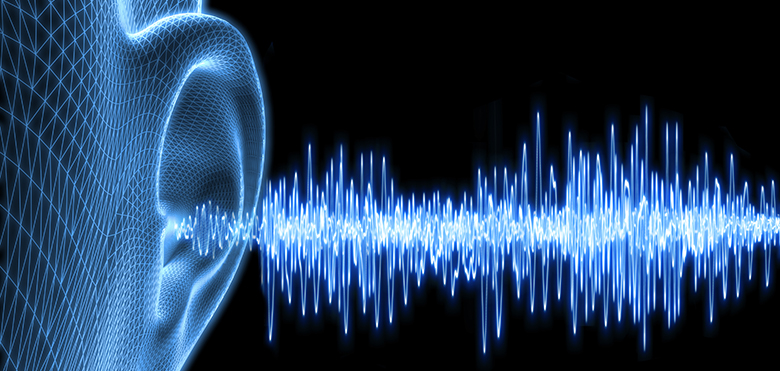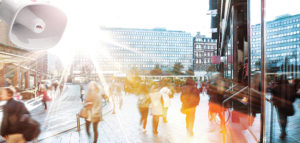Listening in – why audio capture is the secret ingredient to effective surveillance
Imagine joining an important video conference call where all the microphones were muted. Even though you could read the facial expressions from other attendees and may be able to understand a few words, you’re only getting half of the story. Audio adds rich information to the experience, ensuring that everyone involved is on the same page.
From a surveillance perspective, audio capture is a useful tool for crime detection, protection and forensic investigation. It can add a critical layer to surveillance, providing additional elements which give context to a scene or even alerts security teams to activity occurring outside of the field of view. It can also be valuable in situations where video surveillance is not optimized – such as in poor lighting conditions – or even allowed. Some organizations might have been put off looking at audio capture due to regulations, but these don’t need to be a barrier. There are many situations where audio helps to support security teams in detecting and managing activity and deciding on an appropriate response.
Audio can help the decision-making process
Video surveillance has traditionally been used to monitor for incidents in progress, spot people of interest or look for indications of whether unwanted behavior is escalating. The last use case is particularly important, as the footage can help security personnel know whether or not to intervene before an incident occurs. This may sound straight-forward, but it can be difficult to distinguish different emotions using video alone. For example, laughter and play can look similar to aggression leading to false alarms and wasted resources.
By actively ‘listening’ to the scene, audio detection technology – with the assistance of analytics applications – can provide the additional information that adds context and alert security teams, so that the correct action can be taken if necessary. Correctly assessing the situation will save time and manpower in the long run.
Beyond the typical applications of audio in
Audio can be combined with other sensors to enhance surveillance solutions. For example, if a person enters a restricted area motion detection combined with audio picking up the sound of footsteps could trigger an alert. This is particularly important if the person is active in an area where the camera view is restricted.
In poor lighting conditions, if the camera lens is obscured or an incident occurs outside of the field of view of the camera, audio can be used to provide important information in lieu of visual confirmation. The microphones can act as a ‘backup’ which still provides intelligence as to what is happening in a particular area.
Conversely, the absence of sound can also be used to indicate anomalies. For example, if a generator is running – and producing white noise – and malfunctions or shuts down, audio sensors can alert personnel to investigate.
Audio sensors can be ‘smart’ and recognize certain types of sounds by their unique profiles. The most common example is the sound of breaking glass, which is quite distinct. Another use case which would be a useful complement to video and smoke detectors is fire detection. Fire makes a very specific sound which can be identified through audio capture. This is particularly useful in outdoor areas where other methods of early earning of fires such as smoke detectors are unable to be used.
What are the obstacles to using audio in your surveillance system?
Although audio capture can be incredibly valuable for understanding activity on premises, legislation can represent a significant concern. In addition, regulation isn’t consistent across geographies and varies from country to country and even between US states. On an organizational level companies can take the decision to move away from using audio as part of their security solutions, but this needn’t be the case. A deeper understanding and familiarity with the regulations around audio is critical, and organizations should know what is permitted before adding audio to the surveillance system. Once the permits are in place and any necessary measures have been taken to meet legal conditions, the installation should be carefully considered regarding placement and configuration of the equipment.
The set up can itself be a tricky area, be it for a built-in or external microphone. A lot of thought must be applied to both the position and configuration of the device. If a camera has a built-in microphone the choice of placement will be limited, as the camera view must be taken into account. In the cases where the installation ‘sweet spot’ for both video and audio is not accessible, it may be worth extending the system with a stand-alone microphone.
This can offer greater flexibility, as the stand-alone microphone placement can be optimized for audio. For example, to get the best results microphones shouldn’t be placed in areas where they can easily be tampered with, but they must still be within range for effective sound capture. Also, they shouldn’t be placed near a competing source of sound – such as a noisy vent – as this can mask important input.
Audio adds value to video surveillance systems
When used as part of a security solution, audio adds a new dimension to monitoring capabilities and supports security personnel by providing new information to help them better understand in-progress and potential incidents. Looking beyond the obvious applications, audio capture can also be useful in unexpected situations, due to the advanced capabilities of analytics to identify different types of sound. It should not be overlooked as a valuable tool in the surveillance arsenal, as it can be used for much more than security. Organizations should consider adding audio capture to their solutions and enjoy the benefits of a system which provides the complete story.
Click here to find out more about Axis’ audio systems.



